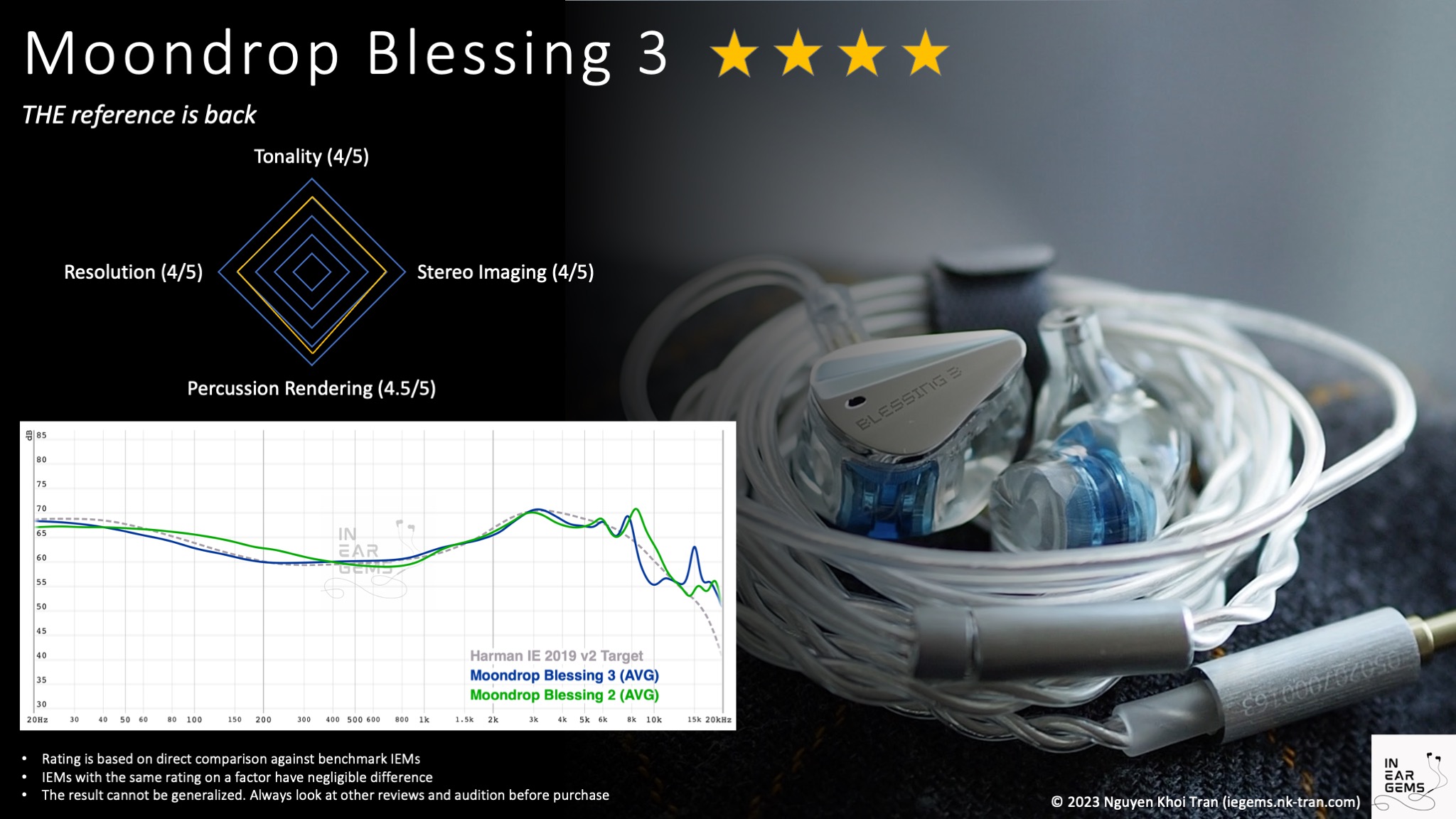Moondrop Blessing 3 - THE reference is back
Released in 2020, Moondrop Blessing 2 has gained a legendary status in the audio community. It was THE recommendation for enthusiasts seeking their first high-end in-ear monitor (IEM). Some even claimed that Blessing 2 surpasses IEMs in the upper echelons. I do not share such enthusiasm or love for these IEMs, but I still have used Blessing 2 as a benchmark to rate other IEMs ever since I started reviewing.
However, it has been three years since Blessing 2’s release, and the IEM market evolves rapidly. In this dynamic landscape, three years can feel like an eternity. Moondrop now presents the new Blessing 3. The question is, does it live up to the legacy of its predecessor?
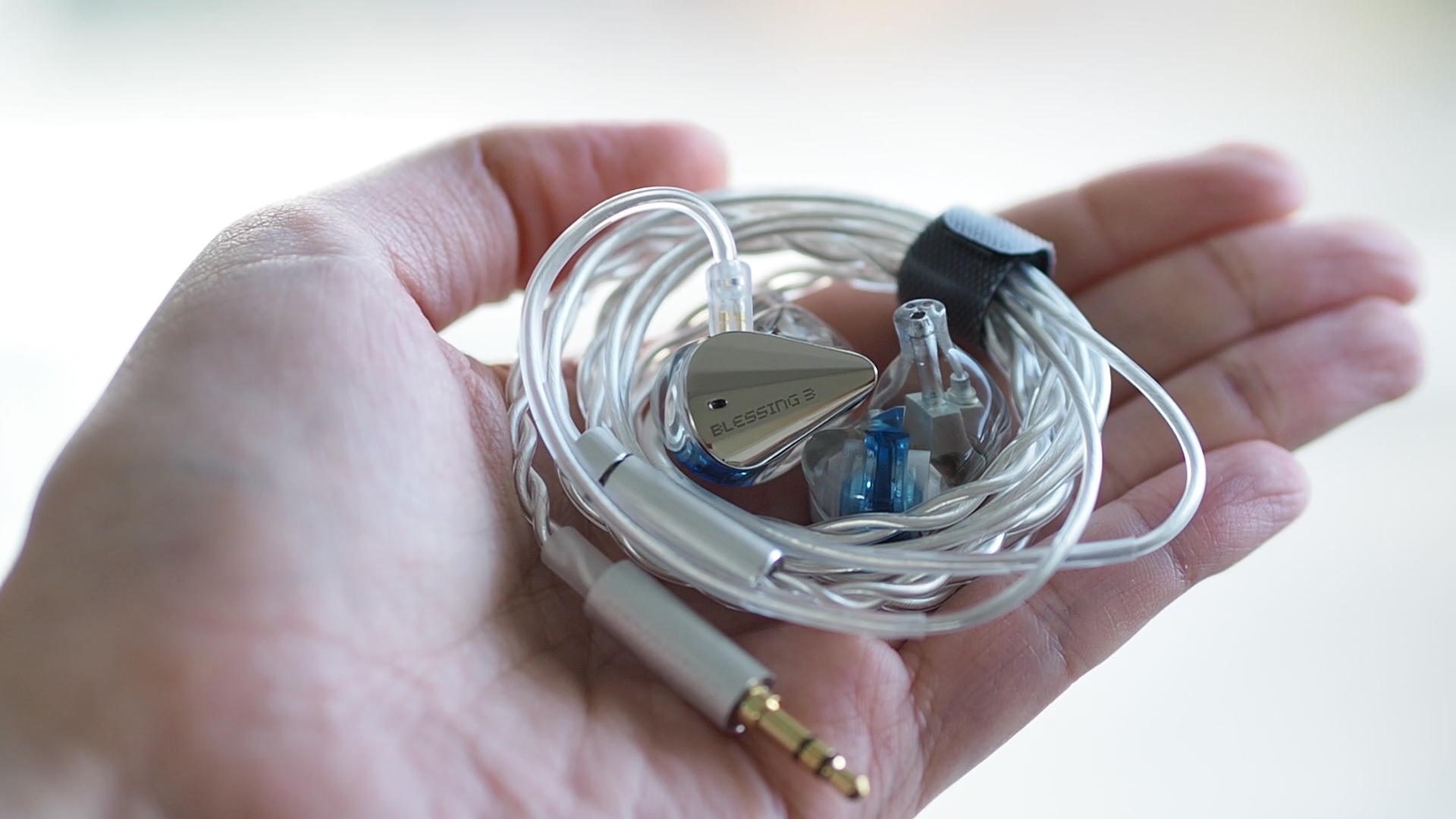
Forewords
- What I look for in an IEM is immersion. I want to feel the orchestra around me, track individual instruments, and hear all of their textures and details. I’m not picky about tonality, as long as it does not get in the way of immersion.
- I rate IEMs within with a consistent scale from 1 (poor) to 3 (Adequate) to 5 (outstanding). Ratings are assigned by A/B tests against benchmark IEMs, regardless of the retail price.
- Ranking list and measurement database are on my IEM review blog.
- This review is possible thanks to the generosity of @lycos who lent me his personal unit (Thank you!).
Source chains for listening tests:
- Reference Chain: iPad -> Creative SXFI -> Topping G5 (for all A/B tests)
- Portable Setup: Shanling M6 Ultra
- Dongle: FiiO KA3
Local FLAC files ripped from CDs or bought from Qobuz were used for most casual listening and A/B tests. My playlist for A/B tests can be found on Apple Music here.
All of my listening was done with Spin Fit CP145 or W1 ear tips. I listen at a medium volume. I usually turn up the volume until the midrange is fully audible and detailed, unless a treble peak or overwhelming bass prevents me from doing so.
Specs
- Driver: 2DD + 4BA
- Connector Type: 2 pin
- Impedance: 14.8ohm
- Sensitivity: 101.7 dB/mW SPL
Build and Comfort

Accessories: Moondrop has made improvements to the packaging and unboxing experience of the Blessing 3, giving it a more luxurious feel. The contents of the box, however, remain the same as the previous generation.
Inside the box, you’ll find a custom carrying case that has the same shape and size as the one that came with the Blessing 2. However, the case now features custom prints and a nicer zipper. The box also includes six pairs of generic silicone ear tips, but there are no Spring Tips this time. It’s worth noting that Moondrop still includes an airplane adapter. Additionally, you’ll find a new cable and the earpieces themselves.
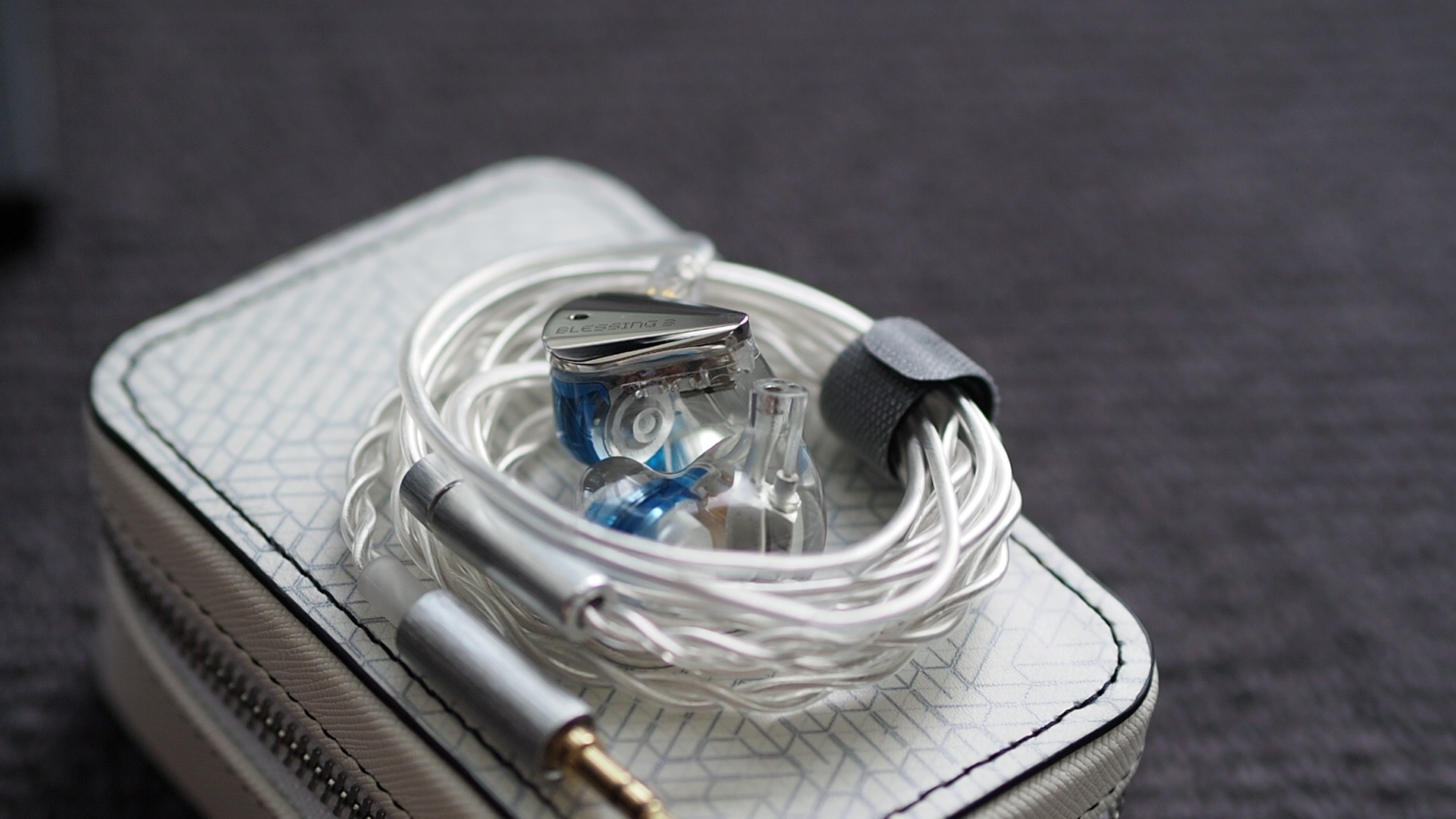
Stock cable: The stock cable of the Blessing 3 has only two cores. While it gets the job done, it doesn’t have a high-end look or feel. The cable tends to retain memory and curls upon itself when coiled and left in the case for a few days. Unfortunately, the cable splitter and plug have a brushed metal texture that doesn’t match the mirror finish of the metal face plates on the earpieces. The cable terminates with a 3.5mm single-ended plug, and there doesn’t seem to be an option for a 4.4mm balanced cable. This cable choice may have been made to keep the price of the Blessing 3 more affordable.
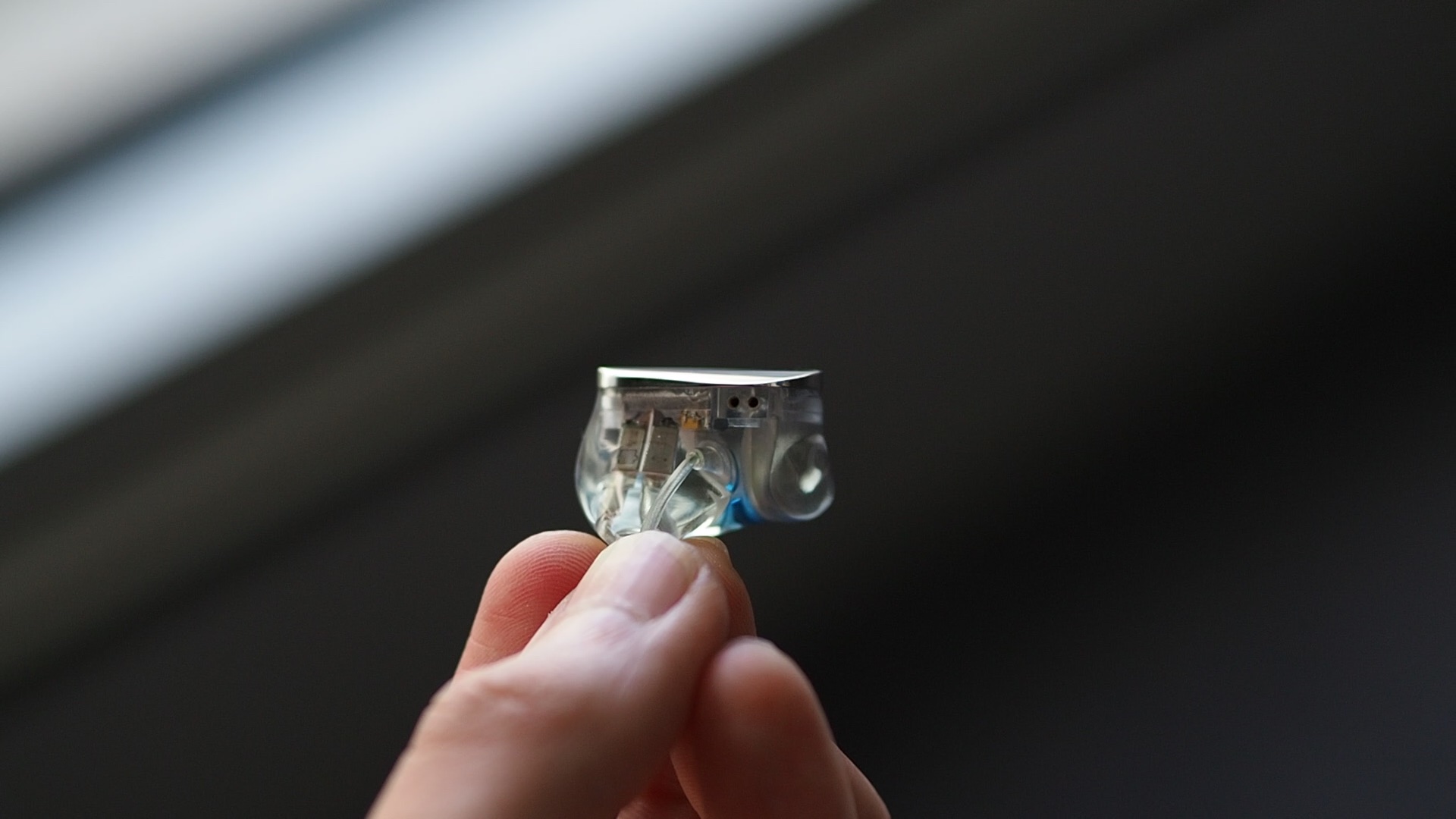
Earpieces: The earpieces of the Blessing 3 are very similar to those of the Blessing 2. They are 3D-printed and filled with resin, which gives them a dense and crystal-clear construction. The face plates are made of metal and have a mirror finish.
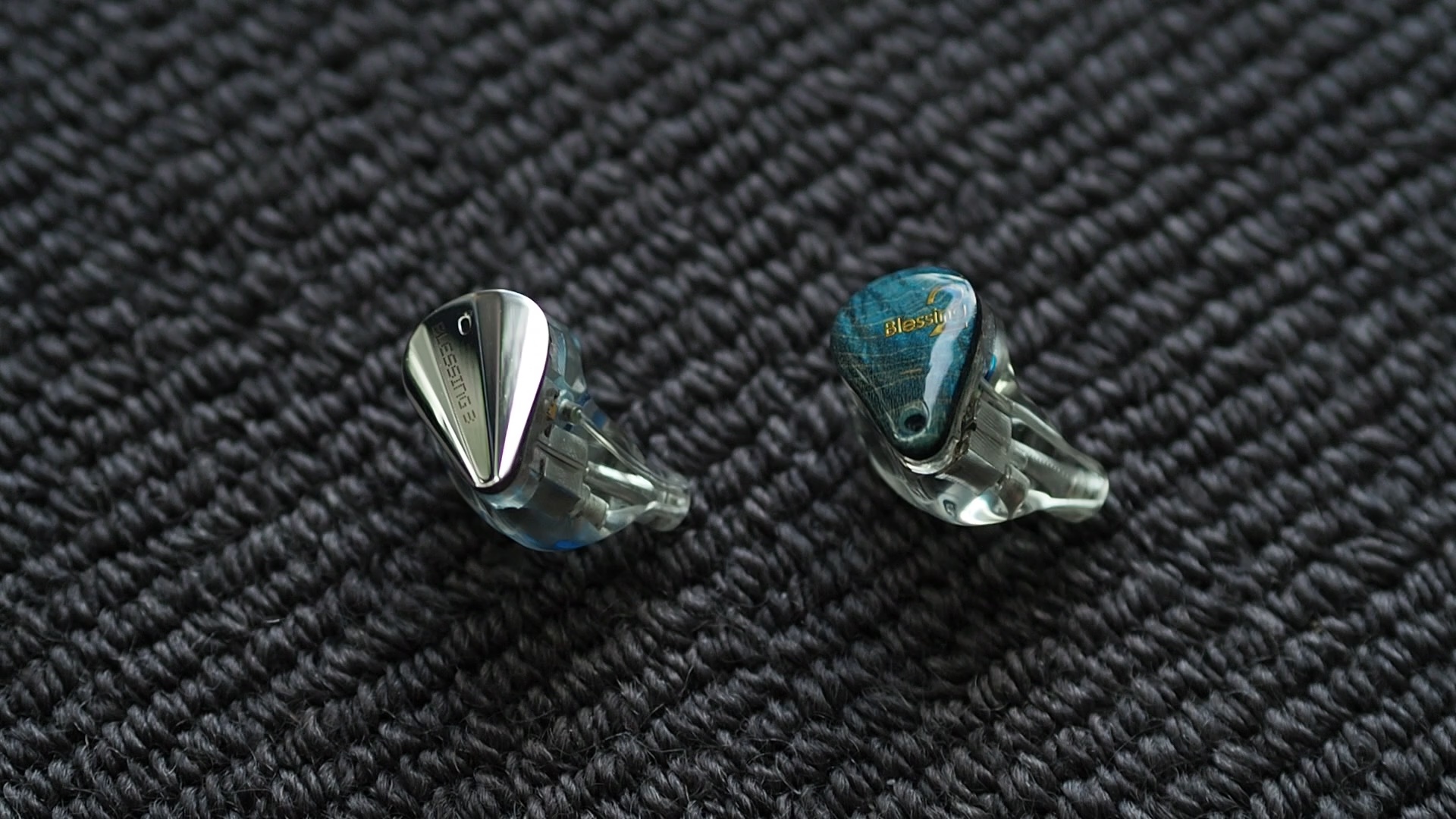

The most significant change in the Blessing 3 is the reduced size of the nozzles. They are no longer oversized like the ones on the Blessing 2, allowing you to use any ear tips you prefer. This change has also resolved the comfort issues that were present in the original Blessing 2. I found that I can wear the Blessing 3 for long listening sessions without experiencing ear pain or fatigue. The vents in the design prevent pressure build-up. The isolation provided by the Blessing 3 is average, comparable to other IEMs.
Tonality
Frequency response of Blessing 3 against the Blessing 2. Measurements were done with an IEC-711-compliant coupler and might only be compared with other measurements from this same coupler. Visit my graph database for more comparisons.
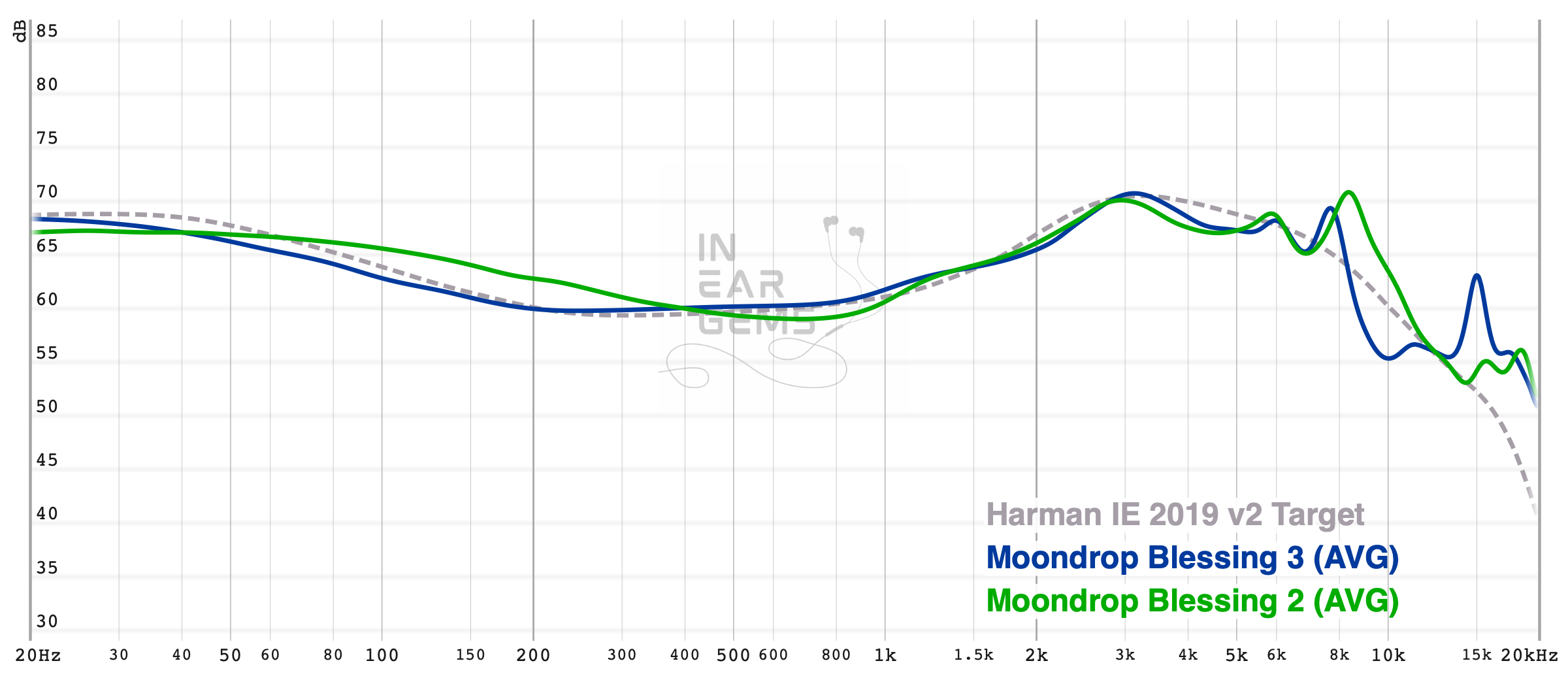
Tonality or “tuning” is where objectivity and subjectivity meet. Objectivity exists in the squiggly lines above, called Frequency Response (FR) graphs. They are created by sweeping a signal from 20Hz to 20kHz and measuring the corresponding loudness coming from an IEM. Unless a human operator deliberately tampers with the microphone or the data, FR does not care about the price or prestige of an IEM and, therefore, is “objective.”
However, human listeners are not microphones. Our ears and brain interpret the sound and decide whether it is “enjoyable.” It is also beneficial to remember that when you play a note on a musical instrument, multiple sounds (fundamental and harmonic) appear simultaneously and mix together. Achieving a life-like balance between frequencies and adding a tasteful amount of imbalance (“colouring the sound”) is the hallmark of an excellent tonality.
Sound signature: The sound signature of the Blessing 3 can be characterized as “crystal clear” and “snappy.” Each instrument stands out in the soundstage with well-defined boundaries and rich texture and detail. In terms of tonality, the Blessing 3 can be described as either “neutral” or “mid-centric,” depending on whether you prefer the midrange to be emphasized or balanced with the rest of the music. The bass is less prominent than the midrange but still present. Most of the bass energy is focused on the sub-bass region, providing a tactile sensation with drums, rather than a prominent auditory presence.
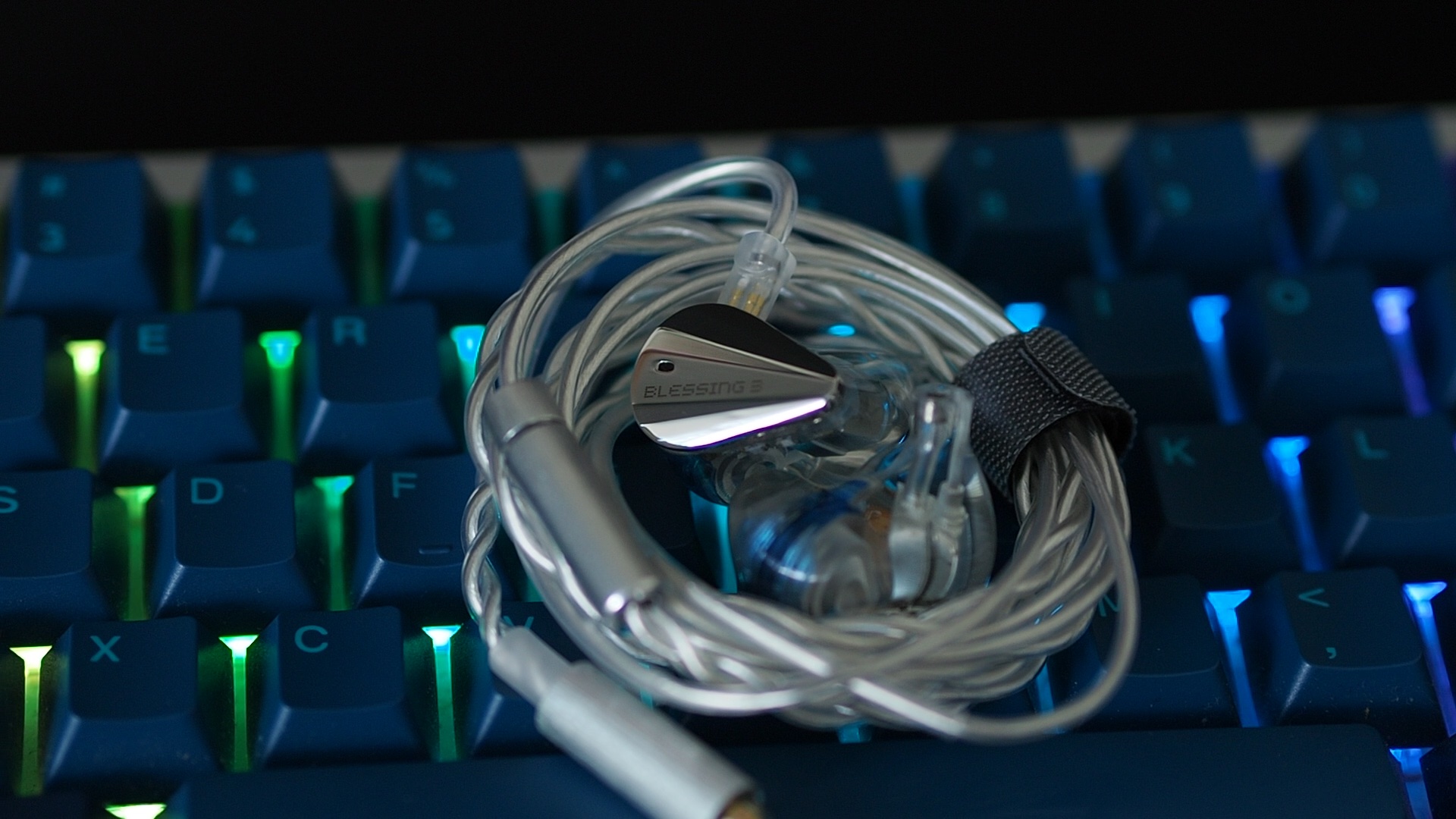
The midrange of the Blessing 3 emphasizes the upper midrange more than the lower midrange. While this tuning enhances perceived clarity, it can also make vocals and instruments sound thin, although the Blessing 3 manages to avoid sounding excessively thin or harsh in most cases. Surprisingly, the Blessing 3 does not exhibit excessive shoutiness despite this strong upper midrange emphasis.
The treble is less emphasized than the upper midrange, and instruments like cymbals and hi-hats are present without being harsh or piercing. The treble extension has been improved compared to the Blessing 2, allowing for better perception of ambience and reverberation in classical recordings.
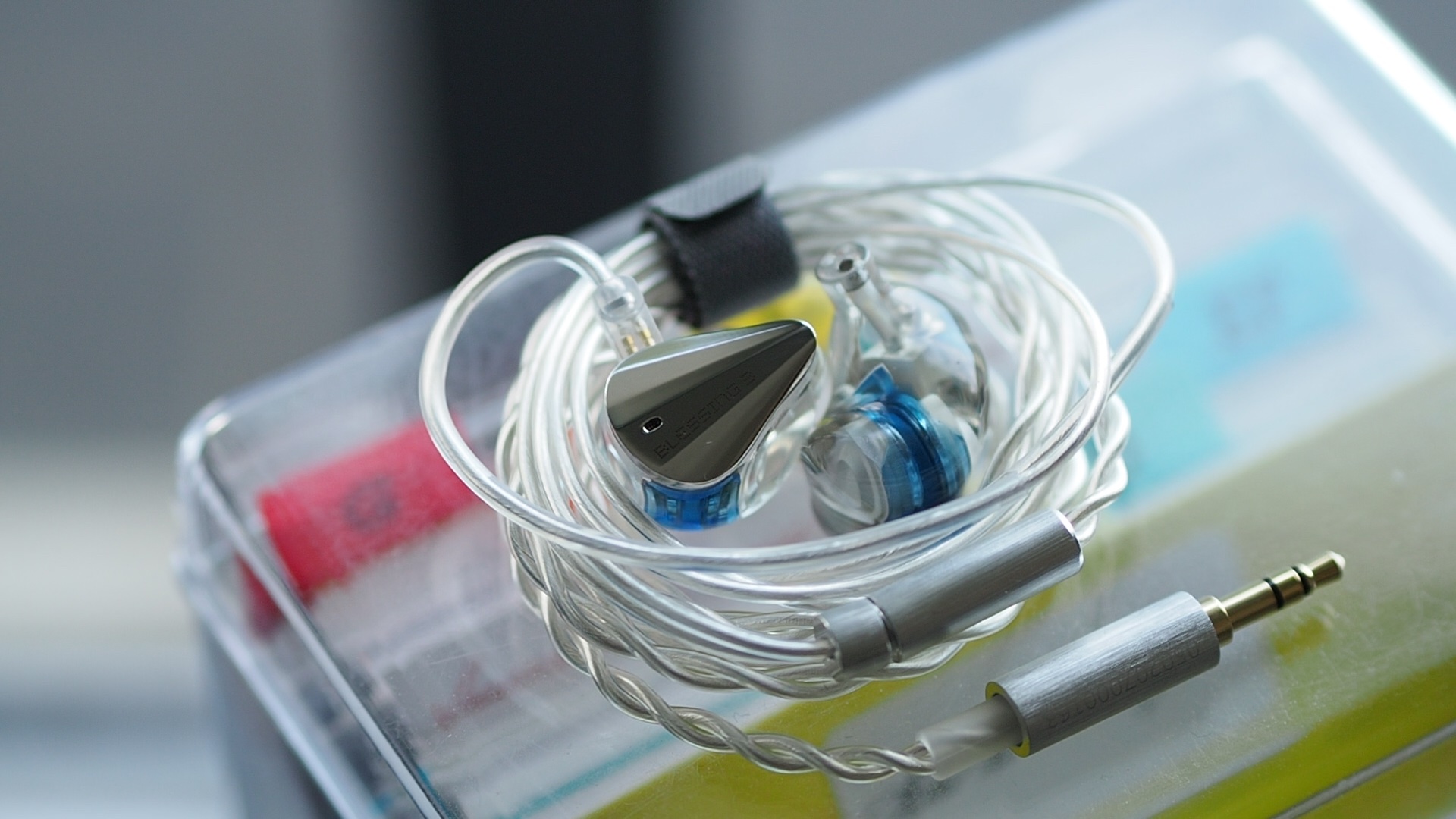
Female vocal (Rasputin cover by Aurora): The Blessing 3 renders female vocals with stunning clarity and detail. Aurora’s voice sounds sweet, crystal clear, and effortlessly detailed. Backup vocals are also smooth, detailed, and easy to follow, without any noticeable sibilance or harshness. Surprisingly, the expected shoutiness in vocals is not a significant issue with the Blessing 3.
Male vocal (Perfect Symphony by Ed Sheeran and Andrea Bocelli): However, the rendering of both Ed’s and Andrea’s voices on the Blessing 3 falls short of expectations. While their voices do not sound incorrect, they lack warmth and fullness. It often feels as if they sing with head voices rather than chest voices. I felt a constant desire to increase the volume to add fullness to the voices, but this leads to shoutiness and forces me to quickly reduce the volume.
Strings and orchestras (Winter by Freivogel and Voices of Music): The orchestral presentation of the Blessing 3 is excellent, with lifelike instrument reproduction. The timbres of instruments are accurate, allowing for easy distinction between violins and violas. While cellos and double basses lack some fullness and authority, the snappy nature of the Blessing 3 still allows these instruments to maintain the beat and sense of rhythm in the orchestra.

Drums and bass (Battle Bar): Compared to “true neutral” IEMs like the Etymotic ER2SE, the Blessing 3 renders drums and bass louder. However, due to the lesser emphasis on bass frequencies compared to the upper midrange, drums and bass guitars on the Blessing 3 are quieter than “U-shaped” IEMs such as the 64 Audio U12T. The physical sensation of drums and bass is excellent with the Blessing 3, despite not being overwhelmingly loud. The bass notes have sharp attacks and are accompanied by a tactile physical sensation. The decay of the bass notes is relatively quick, enhancing the snappy presentation of the Blessing 3. If you prefer nimble and clean bass without sacrificing the physical sensation, you’ll appreciate the Blessing 3’s bass. However, if you prefer thick, powerful, and chunky bass, the Blessing 3’s bass may not meet your expectations.
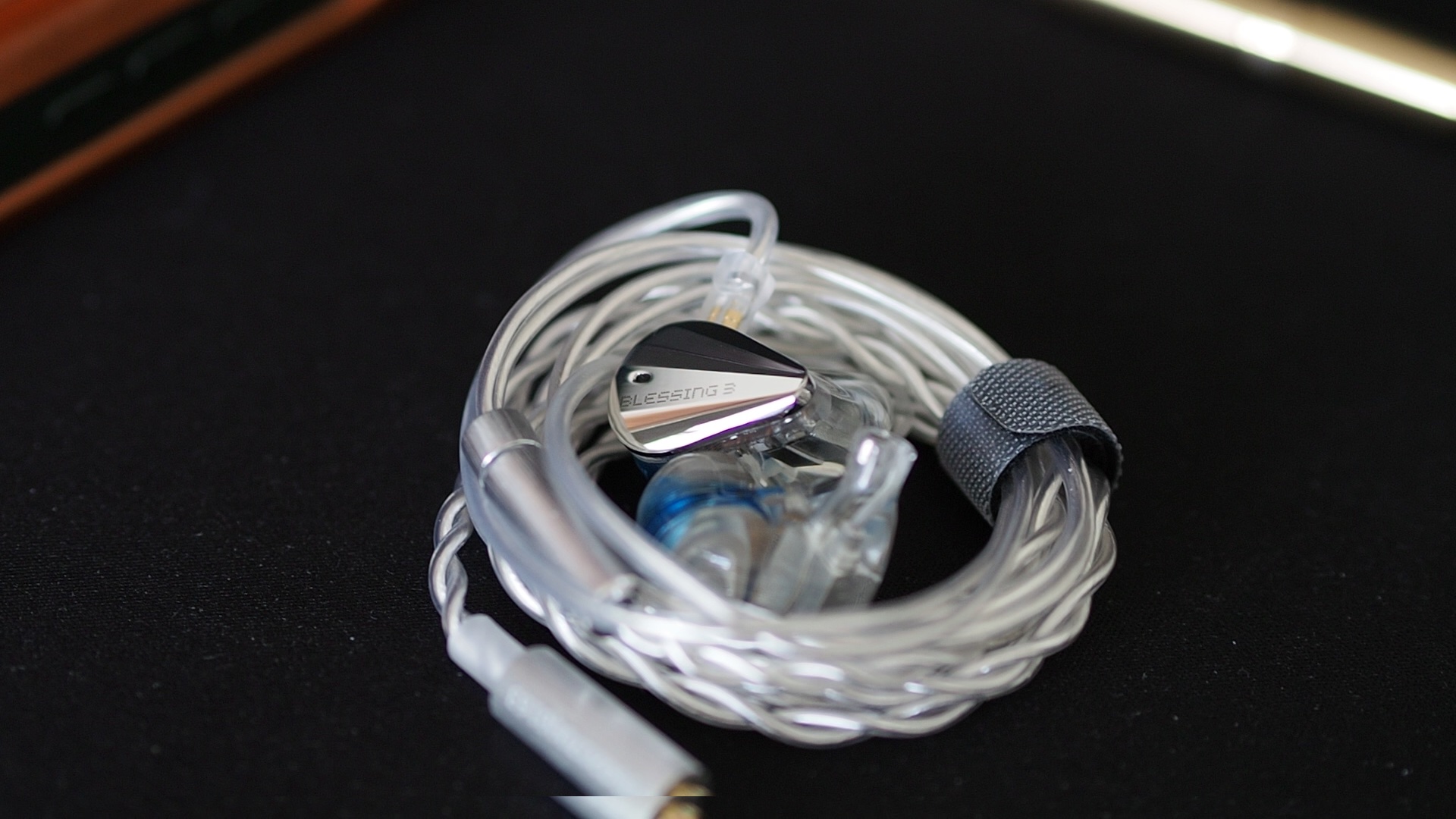
Cymbals, hi-hats, chimes (Eye of the Tiger by Survivor): Cymbals and hi-hats are present and easy to follow, without being edgy or harsh. The note attacks of these instruments are snappy and crisp, while the decay is appropriately tapered. The Blessing 3 provides a good level of of detail and texture in the cymbals and hi-hats.
Soundstage Imaging

Stereo imaging or “soundstage” is a psychoacoustic illusion that different recording elements appear at various locations inside and around your head. Your brain creates based on the cues in the recording, which are enhanced or diminushed by your IEMs, your DAC, and your amplifier. Some IEMs present a wide but flat soundstage. Some present a “3D” soundstage with layering, depth, and height. In rare cases, with some specific songs, some IEMs can trick you into thinking that the sound comes from the environment (a.k.a., “holographic”)
Soundstage imaging with music (One Winged Angel by the Danish National Symphony Orchestra): The soundstage of the Blessing 3 offers a sense of openness and spaciousness, but also feeling forward and in-your-face. It has a wide and tall overall shape, but lacks depth. The center of the soundstage remains within the listener’s head, but it can extend slightly beyond the earpieces, particularly when instruments are pushed to the side channels in recordings. Instruments may also appear at different heights on the soundstage, with higher-pitched instruments often positioned higher. The placement of instruments is precise, with clear boundaries and separation.
The main weakness of the Blessing 3’s soundstage is its lack of depth and layering. Instruments tend to appear on a flat plane rather than within a 3D sphere of sound around the head. Even when some instruments sounding louder, the Blessing 3 doesn’t create a convincing illusion of proximity or closeness. However, thanks to its width, height, and accurate imaging, the Blessing 3 generally avoids sounding congested, except when the music becomes complex and dense.
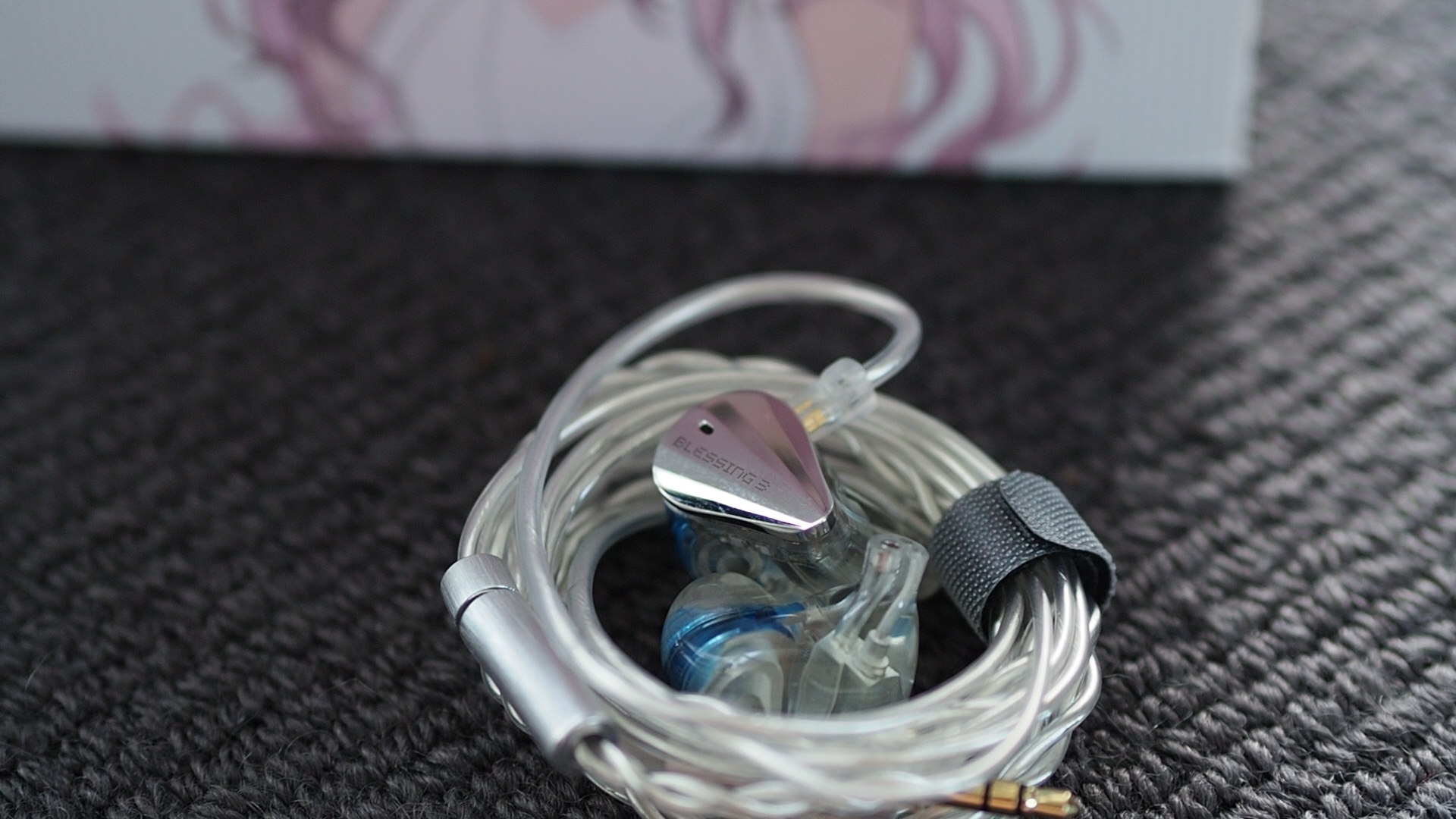
Soundstage imaging with games (CS GO Gameplay by Throneful): The Blessing 3’s flat and wide soundstage is particularly noticeable when used for FPS games like CS GO. It allows for easy recognition of the direction and, to some extent, the distance of gunshots and footsteps coming from the sides and back. However, determining the distance of sounds coming from the front can be challenging.
Resolution

Resolution is a fascinating subject due to the difficulty of pinning down what it really is. To me, “resolution” can be broken down into three components:
- Sharpness, incisiveness, or “definition” of note attacks (see the figure above).
- The separation of instruments and vocals, especially when they overlap on the soundstage.
- The texture and details in the decay side of the notes.
The first two give music clarity and make it easy to track individual elements of a mix. The last provides music details and nuances. Generally, a smooth frequency response and good drivers give the best resolution.
Clarity and Separation (One Winged Angel by the Danish National Symphony Orchestra): The Blessing 3 showcases crisp note attacks, resulting in a clear and well-separated presentation of the music. However, during dense sections of the test track, such as around 3:25, where multiple instruments play loudly and overlap, the sense of clarity is somewhat diminished. In these busier parts, the Blessing 3 tends to present the music as a “wall of sound,” making it more challenging to discern individual instruments.
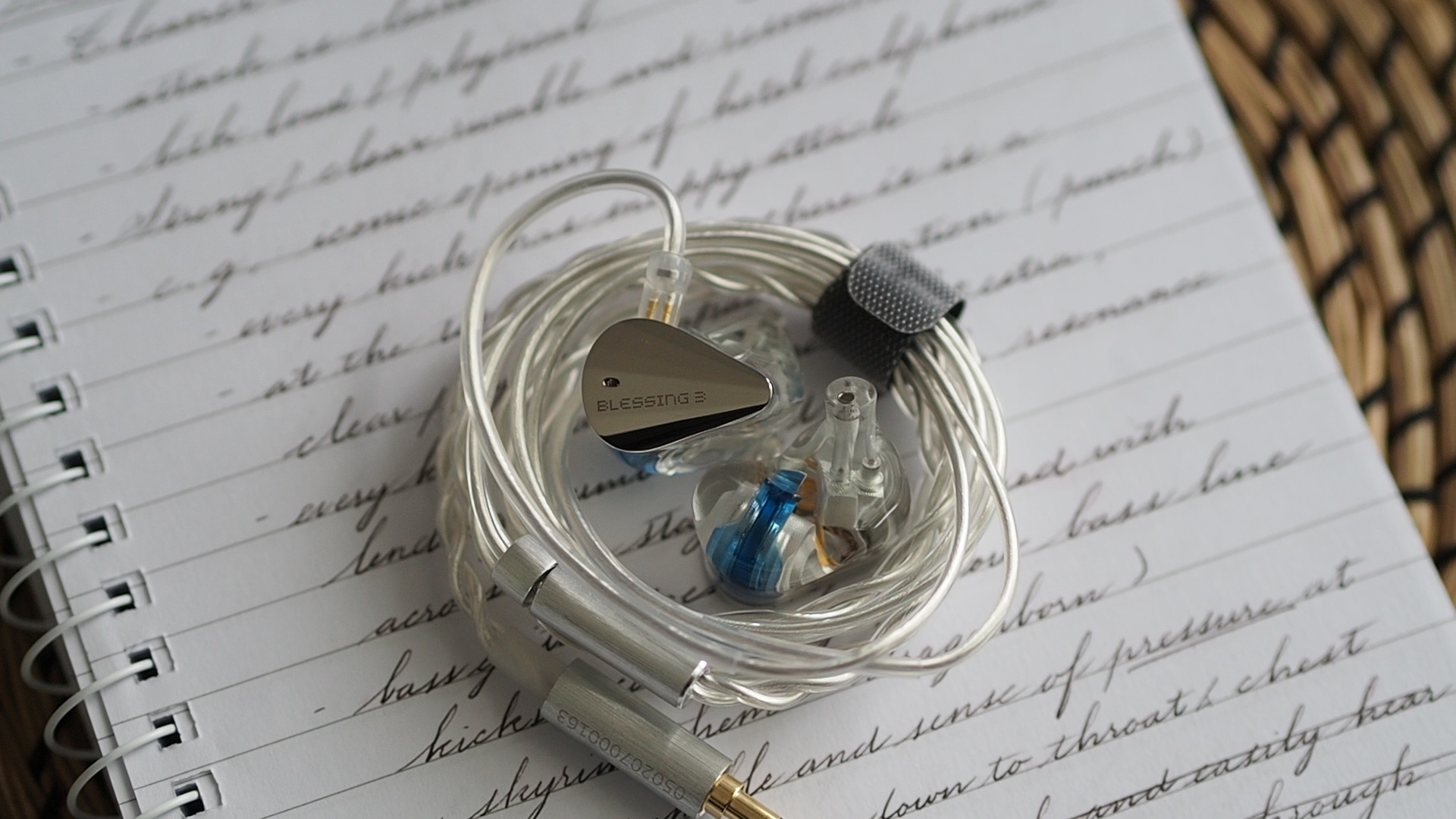
Detail retrieval (Paganini Caprice 24 by Daniel Lozakovich): The Blessing 3 excels at extracting micro details without introducing harshness or piercing highs. It allows for the discernment of articulations when the bow interacts with the violin strings. Furthermore, it reveals the faint tapping of fingers against the fingerboard and the subtle ringing sound produced by other strings in contact with the finger. Additionally, the Blessing 3 also does a great job at capturing the room reverberation, creating a sense of spaciousness and ambience.
Source Pairing
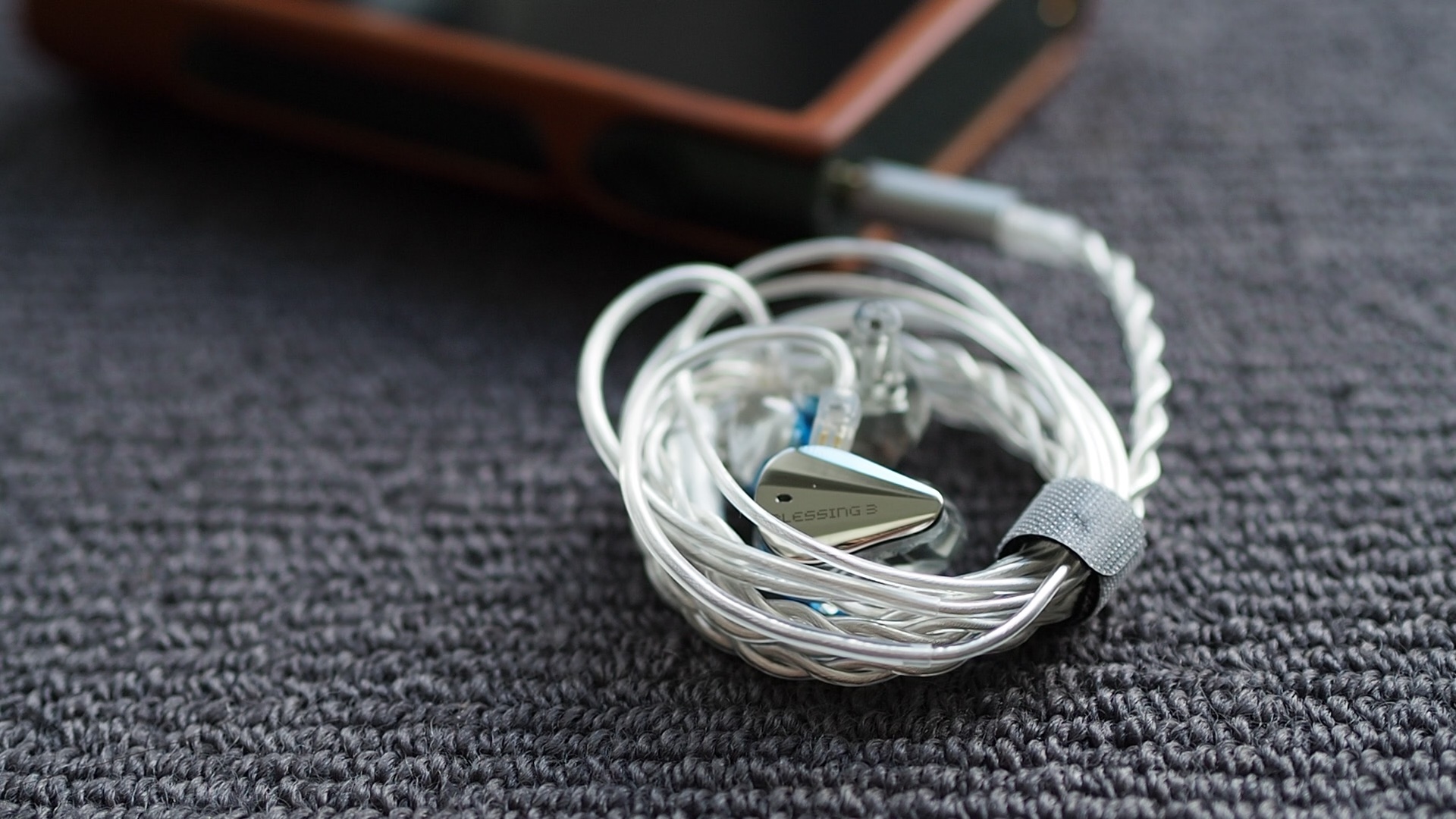
Average dongle (Hidizs XO): When using the Hidizs XO dongle, the soundstage of the Blessing 3 becomes noticeably narrower and shallower compared to when it is paired with the reference setup. The dynamic contrast and the sharpness of the bass attack are also reduced, resulting in a less lively presentation compared to the snappy experience achieved with the reference setup. While the Blessing 3 still sounds decent with this pairing, it lacks engagement and falls into a more ordinary territory.
Apple dongle: With the Apple dongle, the note attacks of the Blessing 3 are softer compared to when using the other dongle, leading to a more natural but slightly less refined presentation. The dynamic constrast and the tactile response of the bass remain mostly the same with the dongle DAC and slightly behind the reference setup. While I wouldn’t say that the Blessing 3 sounds outright bad with either of these sources, I do believe that it benefits from better source setups.
Comparison and Rating

Tonality: 4/5 - Good.
Blessing 3 is the embodiment of the “scientifically-tuned” IEM and can be polarizing depending on personal preference. It is appreciated for female-vocal-centric music but may not be as enjoyable for male vocals and orchestral music. Overall, the tonality is considered good and would impress casual listeners and beginners in the mid-fi IEM market.
Percussion Rendering: Aria (3/5) < Blessing 2 (4/5) < Blessing 3 (4.5/5) < U12T / E5000 (5/5)
The bass quality of the Blessing 3 is significantly improved compared to its predecessor, the Blessing 2. It offers crisp, snappy, and tactile drums and bass guitars, unlike the slower and duller presentation of the Blessing 2. Thanks to the snappy presentation of the bass, the Blessing 3 provides coherency and blends the bass well with the rest of the frequencies. While it shares similarities with the U12T in terms of snappy attacks, the U12T offers a more natural bass decay. Another challenge of Blessing 2 is that its dynamic presentation may vary with different setups, whilst U12T does not change much.
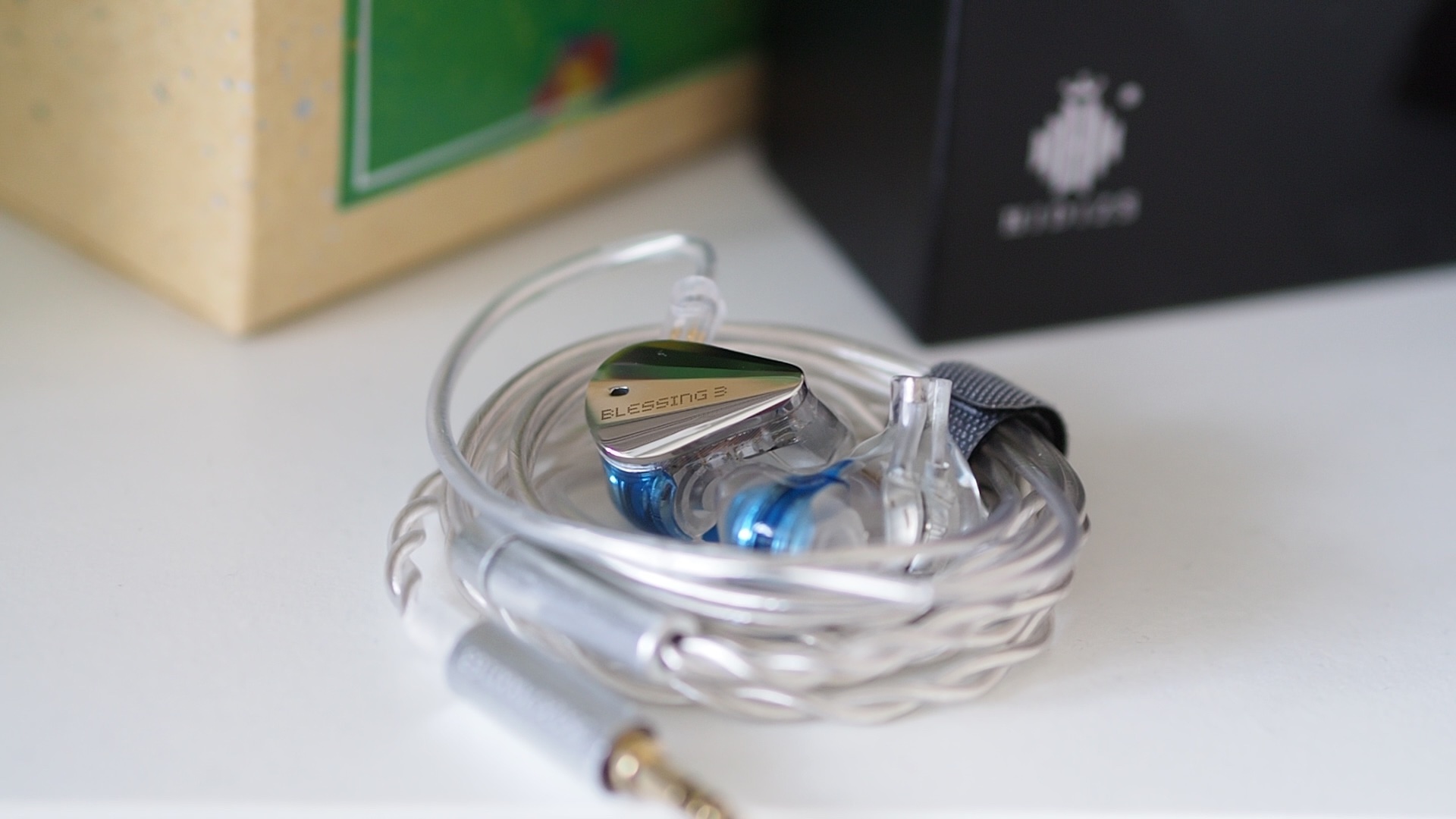
Resolution: SE215 (3/5) < Blessing 2 (4/5) <= Blessing 3 (4/5) < Andromeda 2020 (4.5/5) < U12T (5/5)
The resolution of the Blessing 3 is enhanced compared to the Blessing 2, resulting in clearer and better-defined instruments. The improved resolution does not introduce harshness to the sound. Although it performs well, the Blessing 3 still falls slightly behind entry-level top-of-the-line (TOTL) IEMs like the Andromeda 2020. When switching from Blessing 3 to Andromeda, I immediately found that it was easier to track individual instruments in an orchestra, and those instruments have more nuances and details.

Soundstage: SE215 (3/5) < Blessing 2 (4/5) = Blessing 3 (4/5) < Andromeda 2020 (5/5)
The Blessing 3 maintains a wide but flat soundstage similar to its predecessor. While it works effectively, it lacks the 3D or “holographic” illusion that some higher-end IEMs offer.
Conclusion

After focusing on budget releases and headphones, Moondrop has made a strong comeback with the Blessing 3, their latest mid-fi IEM offering. The Blessing 3 refines and enhances all the positive aspects of its predecessor, the Blessing 2. It also resolves the bass quality issue that was present in the Blessing 2. Additionally, the Blessing 3 addresses the fit problem by reducing the size of the nozzles, resulting in a comfortable IEM that can be worn for extended periods without discomfort.
Who should consider these IEMs? If you prefer a thick and weighty sound with a 3D holographic soundstage, or if you dislike the “well-tuned” signature, the Blessing 3 may not be the best option for you. If you didn’t like Blessing 2 (like myself), Blessing 3 wouldn’t change your opnion. However, if you appreciate “well-tuned” signatures based on Harman target or Moondrop’s VDSF, you will likely love the Blessing 3. It is an excellent choice for those who enjoy female vocals. If you were a fan of the Blessing 2 and want to enhance the overall clarity of the sound without stepping up to a higher price range, the Blessing 3 could be a worthwhile upgrade.
Pros:
- Neutral, mid-centric tonality
- Clear and clean midrange
- Balanced treble that avoids harshness
- Responsive and tactile bass
- Comfortable fit
Cons:
- Flat soundstage
- Lack of authority and weight in male vocals
- Requires good amping
